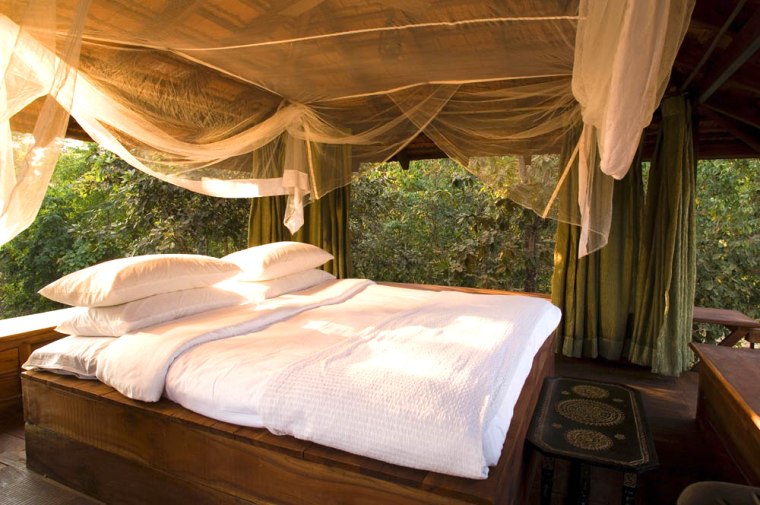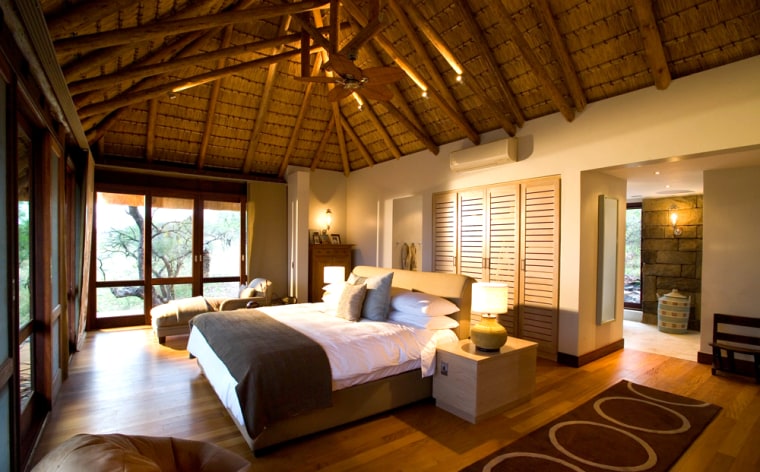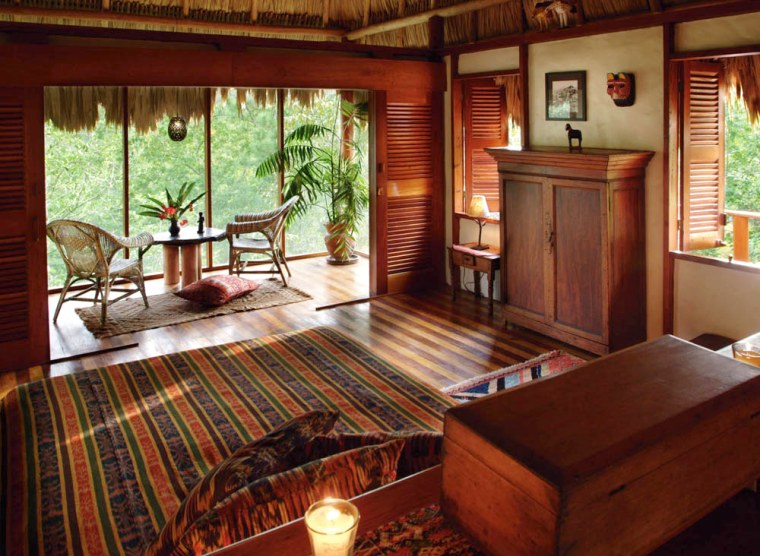Not so long ago, jungle travel was reserved strictly for professional adventurers—biologists, anthropologists, speculators and those hearty few for whom roughing it was a preferred way of life. But as the world has come to appreciate these unique ecosystems, jungle lodges have sprouted up around the globe to accommodate the more discerning traveler.
Yet even in the most luxurious of these handsomely beamed jungle outposts, the primary draw is not 1000 thread-count sheets or doting concierge service. The idea is to keep you comfortable inside but encourage you to head outdoors.
Kurt Holle, co-founder and general manager of Rainforest Expeditions in Peru, believes that the popularity of the luxury jungle lodge is part of a greater cultural trend. “Nature-centric travel is an obvious extension of the numerous nature-oriented cable channels and high-end organic food markets,” he says. “Couple that with the growth of business travel to places like China, India and Latin America, and the combination is explosive. The exotic is closer to home.”
Holle has a point: 30 years ago, only one commercial flight per week landed in Puerto Maldonado, Peru, the entry point for a trio of Rainforest Expeditions’ lodges. Now there are three planes per day.
Most travelers venture to the rainforest with specific goals in mind. Some want to glimpse a rare bird or giant cat; others prefer to take the longer view, marveling at the breadth and complexity of the jungle panorama. Either way, in selecting a luxury jungle lodge, it is helpful to look closely at its ecotourism credentials—namely, the establishment’s relationship with its natural surroundings. What kind of impact does the lodge have on its environment? Does the facility involve and benefit the local community?
Indeed, some lodges not only acknowledge the importance of community participation, but embrace it. Hoopoe Safaris in Tanzania, home to the greatest single concentration of large mammals left on the African continent, is at the forefront of forging partnerships with the area’s locals.
“Community ownership of wildlife through ecotourism can bring returns that equal or exceed that of agricultural or other land use on a sustainable basis,” says Peter Lindstrom, managing director of Hoopoe. “The partnerships are commercially viable for both parties.” Other lodges around the world are making similar efforts. The elegant Chalalán Ecolodge in Bolivia’s Madidi National Park, for example, is 100 percent community-owned.
Still, vacationing in the wild is all about striking the right balance; and the best managed lodges know how to serve up the perfect combination of nature and nurture. Where else on earth can you drink freshly brewed coffee and watch the morning sun rise above a rainforest canopy; or climb into a four-poster bed, and let the soothing nighttime rhythms of the jungle lull you to sleep? Naturally, this luxury varies wildly from lodge to lodge and continent to continent.

South America, home to the Amazon River basin and the world’s greatest surviving rainforest, has taken a lead in jungle lodges. With relatively stable governments, direct flights from North American carriers and forward-looking tourism entrepreneurs, the region has boasted world-class lodges since the '90s.
At Posada Amazonas in the deep Peruvian Amazon, for example, your time is divided between climbing a soaring tower to gaze at the viney vistas, dining on fresh local and international dishes in the expansive main hall, exploring jungle trails that meander through the property, and swapping stories with other visitors at the fully equipped bar. Many of South America’s best jungle lodges are to be found in the outer reaches of the Amazon rainforest, where it winds its way into Bolivia, Peru and Ecuador.

Africa, meanwhile, pioneered luxury nature tourism with the classic safari. Originally, the safari lodge catered to big-game hunting; but before long, rifles began ceding to cameras with the increasing draw of the photo safari. Many of these shutterbugging expeditions were poorly managed and glutted with tourists, and high-end travelers sought more exclusive accommodations. The end result: the luxury safari lodge. Rich accommodations are dished up with easy access to nature, while working diligently to preserve the main attraction—the landscape and wildlife.
And you can’t get much more exclusive than the Phinda Private Game Reserve’s Getty Lodge, where a private ranger—and your own 4x4—will help guarantee that your days are unique. (The lodge’s stately four-suite villa will make sure that your nights are equally exceptional.)
Asia only recently entered the luxury jungle market, but is already adding a number of impressive new lodges. In India, the plush Taj Hotel chain has recently partnered with the highly regarded Conservation Corporation of Africa (CC Africa) to establish a series of top-end nature lodges in the sub-continent. For a little more than $700 a night, you can dine on exquisite North Indian fare, sleep on a machan (a lavish rooftop deck) and stalk the giant Bengali tiger in the morning—all while helping to ensure that the tiger’s habitat remains intact for generations to come.
For those who can afford such luxury accommodations, this is what’s called having the best of all worlds.
